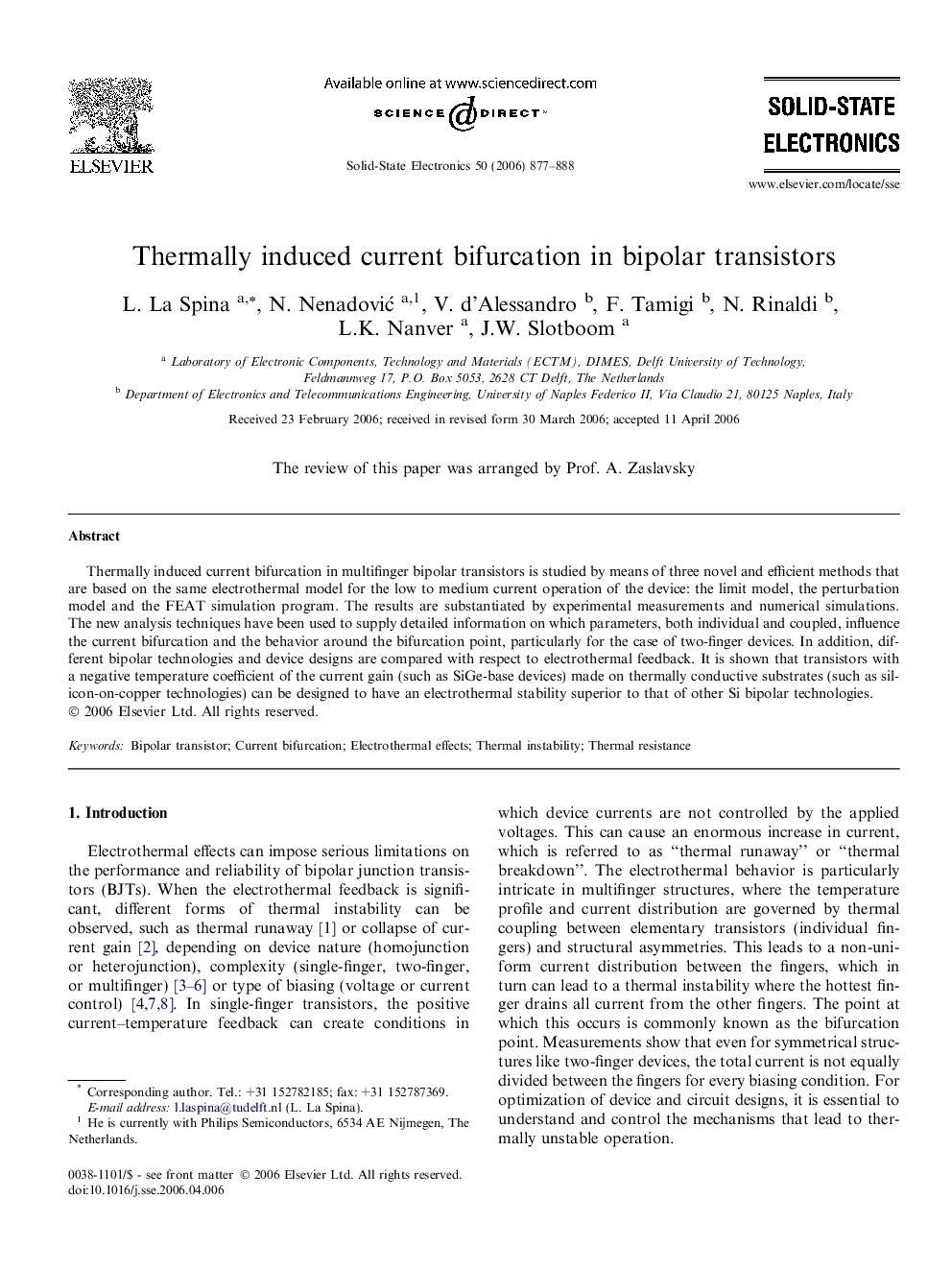| Article ID | Journal | Published Year | Pages | File Type |
|---|---|---|---|---|
| 749732 | Solid-State Electronics | 2006 | 12 Pages |
Abstract
Thermally induced current bifurcation in multifinger bipolar transistors is studied by means of three novel and efficient methods that are based on the same electrothermal model for the low to medium current operation of the device: the limit model, the perturbation model and the FEAT simulation program. The results are substantiated by experimental measurements and numerical simulations. The new analysis techniques have been used to supply detailed information on which parameters, both individual and coupled, influence the current bifurcation and the behavior around the bifurcation point, particularly for the case of two-finger devices. In addition, different bipolar technologies and device designs are compared with respect to electrothermal feedback. It is shown that transistors with a negative temperature coefficient of the current gain (such as SiGe-base devices) made on thermally conductive substrates (such as silicon-on-copper technologies) can be designed to have an electrothermal stability superior to that of other Si bipolar technologies.
Related Topics
Physical Sciences and Engineering
Engineering
Electrical and Electronic Engineering
Authors
L. La Spina, N. NenadoviÄ, V. d'Alessandro, F. Tamigi, N. Rinaldi, L.K. Nanver, J.W. Slotboom,
